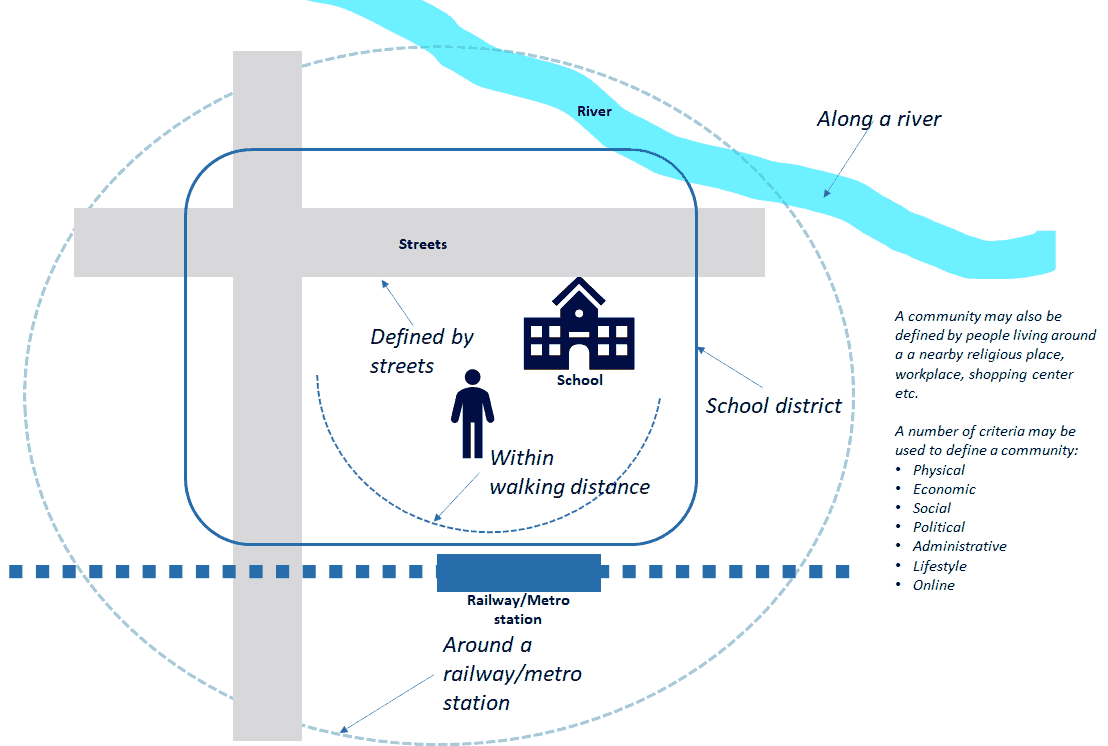
The 15-minute City
Definitions of a 15-minute City: Laying Out the Boundaries

Hari Srinivas Concept Note Series C-024
Abstract
The 15-minute city is an urban planning concept that envisions neighborhoods where residents can access essential services - such as work, education, healthcare, and recreation - within a 15-minute walk or bike ride. By prioritizing accessibility, walkability, and mixed-use development, this model promotes sustainability, reduces reliance on cars, and enhances community well-being.This document explores the core principles of the 15-minute city, its benefits, challenges, and the factors that define its boundaries, offering insights into how cities can adopt this approach for more resilient and livable urban environments.
Keywords
15-minute city, Urban planning, Walkability, Sustainable cities, Mixed-use development, Community integration, Public transportation, LivabilityThe 15-minute city is an urban planning concept that reimagines neighborhoods as self-sufficient communities where residents can access essential services, such as workplaces, schools, healthcare, shops, and recreational spaces - within a short 15-minute walk or bike ride.
By promoting compact, mixed-use development and reducing reliance on cars, this model fosters more sustainable, livable, and socially connected environments. Rooted in principles of accessibility, walkability, and local integration, the 15-minute city enhances quality of life by minimizing commute times, reducing pollution, and strengthening community ties.
This document explores the key features, benefits, and challenges of implementing this transformative approach to urban design.
The 15 minute city is a concept that advocates for cities to be designed in a way that allows people to live, work, and play all within a 15 minute walk or bike ride. This urban design theory has gained popularity in recent years as a way to create more sustainable and livable cities.
The 15-Minute City is a new urban planning concept that prioritizes pedestrian friendly neighborhoods. The goal is to create areas where people can walk or ride their bikes to most destinations within 15 minutes. This would reduce traffic and pollution, while also promoting healthy lifestyles.
The 15 minute city is a urban planning concept that imagines cities in which all necessary destinations are within a 15 minute walk or bike ride. This would create more livable, sustainable, and healthy cities.
A 15 minute city is a city that requires minimal travel among houses, parks, office, restaurants, schools. Every essential amenity is within a 15 minute walk or cycle. Regardless of whether you live in the centre or in another neighbourhood, each neighbourhood fulfils six social functions: living, working, supplying, caring, learning and enjoying.
Fifteen-minute cities are heavily based on attributes that have been used as design flagships in the past, namely accessibility, walkability, density, land use mix and design diversity.
Some of the key features of 15-minute cities include compact, mixed-use development; pedestrian- and bicycle-friendly streets; and an emphasis on public transportation.
Integrated Neighborhoods: A 15-minute city is characterized by integrated neighborhoods that offer a diverse range of services and amenities within a short distance. It aims to create compact, mixed-use communities where residents can live, work, and access essential services like grocery stores, schools, healthcare facilities, parks, and public transportation, all within a 15-minute walk or bike ride.
Reduced Dependency on Cars: In a 15-minute city, there is a focus on reducing the reliance on cars as the primary mode of transportation. By providing comprehensive local services, the concept encourages active transportation such as walking and cycling, making it easier for residents to reach their destinations quickly and conveniently without needing a car.
Sustainable and Livable Communities: The 15-minute city concept emphasizes sustainability and livability by promoting shorter commute times, reducing traffic congestion, and minimizing environmental impact. It aims to create communities that are more socially inclusive, economically vibrant, and environmentally friendly, enabling residents to have a better quality of life and fostering a sense of community and connection within the neighborhood.

The boundaries of a 15-minute city is closely related to the definition of a "community" itself - which may use a number of factors such as railway stations, major streets and other geological and urban features to set its boundaries. These in effect become the limits of the 15-minute city as well - as illustrated in the figure above.
|
|
 |
Return to The 15-minute City Contact: |
